History
Reference:
For example: the Nikon and Laurentian Chronicles - in Minsk, during the well-known battle of Nemiga, in March 3, 1067 (1066) “there was a great snow, severe winter came with a terrible cold”; Ipatiev Chronicle - in 1190 “it was warm in winter in Pinsk, the snow melt down”; The South Russian chronicle - in August 3, 1694 “a great hail fell around Vitebsk, that smashed all the bally crops in the field”; in 1698 “there was a strong storm in Vitebsk”.
19th century
Meteorological observations in Mogilev have been organized since 1808, in Vitebsk - since 1810, in Brest - since 1834, in Bobruisk and Svisloch - since 1836, in Grodno - since 1837, in Gorki - c 1841, in Minsk - since 1849. The Main Physical Observatory (MPO) was created in St. Petersburg in April 1, 1849 by the decree of Nicholas I, by the initiative of Academician A. Kupfer. Eight meteorological stations that were opened at those points and were included into MPO backbone network. After the observatory organization the meteorological network began to develop more actively. The year of 1886 witnessed a sharp increase in the meteorological network on the Belarusian provinces territory - 45 meteorological stations belonging to various departments.
Reference:
List of 45 meteorological observations stations belonging to different departments (1886).
Meteorological observations materials have been published in the "MPO Observations Collection" beginning from 1850, and 1865 to 1910 they were regularly placing in “The MPO Chronicles”. In 1895 in those chronicles there were placed observation materials of 17 stations and in 1897 - data of 21 stations located on the Belarusian territory were already published. Taking into account the network of stations of the third category, that year in the Belarusian provinces territory, weather observations were carried out with the help of almost 100 stations. In 1906, the number of stations published in the MPO chronicles increased even more - 43 (38 of them were in the current borders of Belarus).
The Belarusian Rivers first hydrological researches started at the beginning of the eighteenth century when waterways began to develop and navigable canals were built. More systematic Belarusian Rivers first hydrological researches started with the establishment of the Main Administration of Water Communications of Russia. Observations upon the opening and freezing of rivers were first organized in Belarus in the early 19th century (1808). The first stationary hydrological posts were opened on large rivers of Belarus for shipping purposes in 1876. Studying the Belorussian Polesie rivers was engaged for a long time (1873-1898) by “The Western expedition of draining the marshes” directed by Ivan Zhilinski.
The first official issued publication of the observations results at the Belarusian hydrological posts is “Information on water level conditions on the rivers and lakes of European Russia on observations at 80 water-measuring posts (1881)”. Subsequently, from 1881 to 1910, observations on the hydrological network for decades were published in the editions of “Information on the water level on the inland waterways of Russia”.
20th century
By 1914, there were 27 meteorological stations, 65 rain-gauge stations and 63 water-measuring posts that belonged to various departments in Belarus.
Reference:
The number those stations include only observation points located on the territory of modern Republic of Belarus, but after the division of the territory the rest remained outside the country. For example, in total, the Belarusian provinces meteorological network included 44 stations of the 2nd category and 76 stations of the 3d category.
During the First World War and the Civil War, the hydrometeorological network location geography on the Belarusian territory has changed significantly: many meteorological stations and posts were ceased to function, were destroyed and hydrological observations were ceased.
Reference.
Interesting Facts.
The Headquarters in 1914-1916 was in the Baranovichi area in specially equipped trains. The Chief Commander received full climatic data, information about weather and hydrological conditions in the front’s area.
At the Konstantinovski headquarters a weather station operated in the Izabellino-Pruzhany area. In Minsk, on the Western Front worked meteorological and hydrological departments. The new hydrometeorological’s service formation began from the first days after the October Revolution. Council of People's Commissars of the RSFSR issued a decree “The organization of the meteorological service in the RSFSR” on June 21, 1921 signed by Vladimir Lenin, that document clarified the tasks of the Russian hydrometeorological service. Similar work carried out in all republics that had been included in The Union since 1922, including in Belarus. In 1919 there were only 7 stations in Belarus that belonged to different departments. In 1921 eight water-measuring and two rain-lifting stations were resumed. At that time the hydrometeorological observation stations were mainly subordinated to the People's Commissariat of Agriculture (the People's Commissariat for Agriculture or the National People’s Commissariat) and the People's Commissariat of Communications (the People's Commissariat or the People’s Commissariat of Transport). The weather stations in Gorki, Vasilevichi, Maryina Gorka, and the Novoe Korolevo remained in charge of the MPO.
On June 2, 1923, decided to organize BSSRs’ meteorological observations network. The network also planned to include the existing network of weather stations and posts that belonged to the People’s Commissariat of Communications - 7 stations of the 2nd category and 2 stations of the 3d category.
From July 1, 1924, the Meteorological Office began to work under the authority of the Experimental Department of the People’s Commissariat of Agriculture. The primary task of the Meteorological Office was to secure the network’s correct management operation of the existing own and departmental hydrometeorological units of the BSSR, received materials collection and processing, the necessary hydrometeorological information delivery to the concerned departments and organizations, the development of a scientifically based network of stations and posts. Professor Nikolai Myshkin was appointed as the head of the meteorological office.
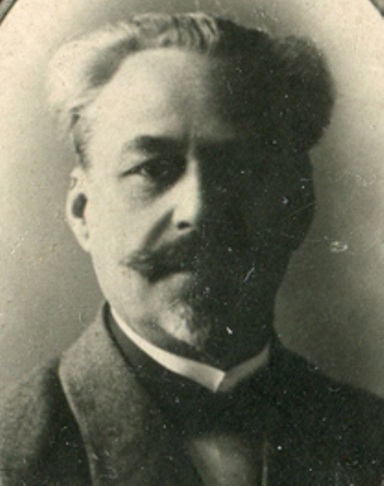
Nikolai Myshkin (1864 - 1936)
July 1, 1924 is considered to be the Belarusian Hydrometeorological Service formation date. Already at the beginning of its activity, the meteorological office began processing the meteorological network observations and materials began to publish in the form of MPO chronicles in 1925. The first Belarusian Weather Bulletin was published in April 1925. The first balloon pilot was launched in Minsk in July 1926. Since 1926, agrometeorological observations have been launched, and research work on the study of hail storming has begun.
At the beginning of 1927, the Meteorological Office was attached to the Belarusian Research Institute of Agriculture and Forestry under the CPC of the BSSR and became part of the organized by the Belarusian Geophysical Service Institute. In 1928 it was transformed into the department of the network of meteorological stations of Belgeophysis, which checked and processed the data of observations of 80 meteorological stations of the republic, made monthly weather surveys and its influence on the condition of crops and grasses.
Reference:
According to the Meteorological Office data on February 1, 1927, there were on the Belarusian territory:
- 20 stations of the 2d category, four of them were on the Main Physical Observatory, seven - the People's Commissariat of the USSR, nine - the People’s Commissariat of the BSSR;
- 2 aerostat stations (Minsk and Gorki);
- 37 rain and snow measuring posts, 5 of which are MPO’s, 30 of the People’s Commissariat of the BSSR;
- 40 water and rain posts belonged to the Department of Land Management and Land Reclamation of the People’s Commissariat of BSSR;
- 15 snow measuring posts of the People’s Commissariat of the BSSR;
- 7 measuring stations.
Since 1928 the management of hydrological works in the republic has been entrusted to the People’s Commissariat of Agriculture hydrological part. In the same year, all meteorological stations that were on the maintenance of the MPO, were subordinated to the BSSRs’ Meteorological Office. The question of uniting the entire network in a single state body arose.
1930. Belarusian Hydrometeorological Institute became a part of the Hydrometeorological Committee of the Council of People's Commissars of the BSSR (CPC BSSR).
The resolution of the Central Executive Committee (CEC) and the Council of People’s Commissars (CPC) of the USSR of August 7, 1929 №. 468 "About the merger of the hydrological and meteorological service and the creation of the Unified Service in the country with the governing body - the USSR Hydromet Committee" was adopted very timely. In Belarus, in accordance with the decision of the Council of People’s Commissars of the BSSR, the Republican Hydromet Committee was established; the provision was approved for the organization of a single hydrometeorological service in the territory of the BSSR and its best service to all branches of the national economy and defense (№. 120 of March 23).
At the Hydromet Committee, by decision of the Council of People’s Commissars of the BSSR №. 170 of July 3, 1930, it was decided to establish the Belarusian Hydrometeorological Institute, which included: the Belarusian Geophysical Service of the Research Institute of Agriculture and Forestry with its weather stations network; a network of meteorological stations of The People’s Commissariat of Transport (PCT), experimental stations; the hydrological part of the People’s Commissariat of Agriculture with a network of water and rainwater posts, and later a network of water points of the Dnieper river transport and other institutions. Pavel Adamov was invited to establish the work of the new institute.
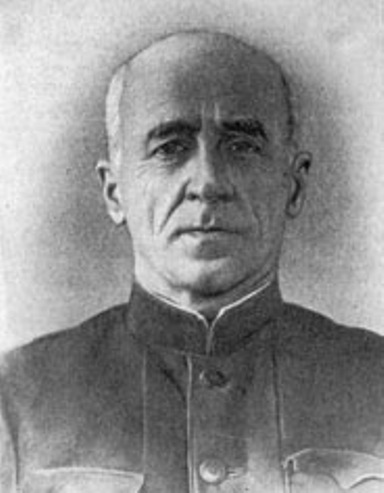
Pavel Adamov (1887 - 1975)

Aleksei Kaigorodov (1881 - 1951)
In the same year, the Geophysical Observatory was established in Minsk by the Decree of the Council of People’s Commissars of the BSSR on October 3, 1930, which began functioning after the building construction completed in January 1, 1936. The head of the observatory was nominated Aleksei Kaigorodov, who compiled a detailed task for the design of a three-storied observatory building with a tower and residential accommodation for the staff, providing for places for the manor and the building of the observatory, and did a five-year development plan and equipment of the organization.
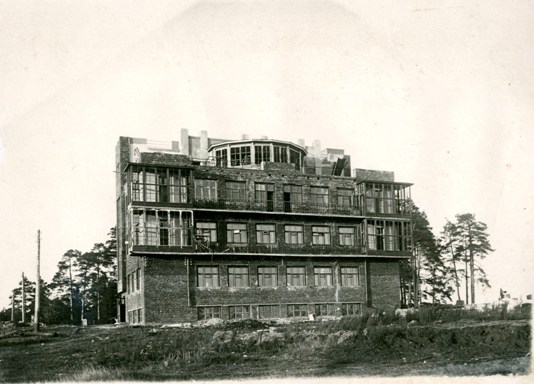
The Minsk Geophysical Observatory building in 1936

A modern view of the observatory in 2016
1931. In connection with the decision of the Council of People’s Commissars of the USSR, the Hydromet Committee was transferred to the People's Commissariat of Agriculture.
In February 1931, the number of stations and posts under the jurisdiction of the Belarusian Hydrometeorological Institute were 40 meteorological and 23 hydrological.
1933. Main Directorate of the Unified Hydrometeorological Service under the People’s Committee of Agriculture of the BSSR. (the resolution of March 28, 1933, CPC BSSR Hydromet Committee was reorganized).
In 1937, the management of the Belarusian hydrometeorological service was commissioned by the Smolensk Hydrometeorological Service.
In 1939, the BSSR’s Hydrometeorological Service Administration was established after the reunification with the Western Belorussia, which was under Poland, with the BSSR.
At the end of 1940, the Department carried out its activities under the name “Belarusian Department of Hydrometeorological Service” and was administered by the Main Directorate of the Hydrometeorological Service under the Council of People’s Commissars of the USSR. In 1941, on the eve of the Great Patriotic War, a technically equipped state hydrometeorological network operated on the Belarusian territory, which numbered 464 hydro-meteorological stations and posts, which are an integral part of the USSR hydrometeorological service, of these: meteorological stations 2nd and 3d category - 139, hydrological stations and posts - 325.
After the sudden attack of fascist Germany on the Soviet Union, the territory of Belarus was quickly occupied. The Administration of the Hydrometeorological Service of the BSSR ceased its activity practically from the first days of the war. Workers who managed to evacuate joined the Red Army, or continued to work in the departments of hydrometeorological services of other republics.
During the Great Patriotic War
Observers of individual stations and posts bravely continued to conduct observations during the occupation - for example in Gorki, Vasilevichi, Maryina Gorka, Borisov, Gantsevichi and other cities and towns. But the results of meteorological observations of those times were not completely preserved.
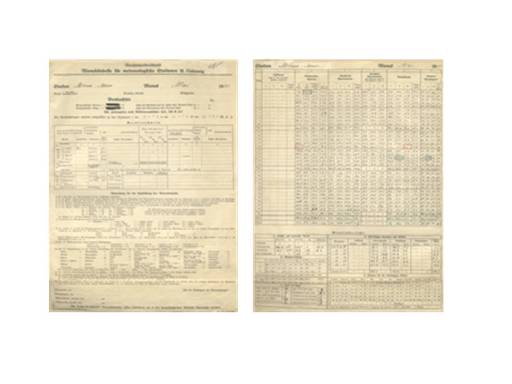
Meteorological observation tables. Minsk, May 1943
In occupied Minsk, the Germans resumed the work of the Minsk Moor, which operated on the basis of the Swamp Station. The observation materials were recorded in Soviet forms, and since 1943 - in weather tables in German. Meteorological observations were also conducted in Loshitsa.
The first written information about the Belarusian Administration of the Hydrometeorological Service, as an acting institution during the Great Patriotic War, dates back to 1943. The Belarusian Department of Hydrometeorological Service resumed its activity in Moscow in June 1943 under the name of “Western Administration of Hydrometeorological Service of the Moscow Military District” (Western AHMS MMD) and the head of the Department was Andrei Glomozda, he was the permanent head of the Hydrometeorological Service of the BSSR.

Andrey Glomozda (1909 - 1987)
From October, 1943 the Administration relocated to Smolensk. According to the order of the MDHS of the RA of June 12, 1943, 18 hydrometeorological stations and 18 posts of the Smolensk region with their available staff were transferred from the AHMS of the Moscow Military District from July 10, 1943.
Reference:
Information about meteorological observations that were carried out in the partisan areas of the Belarusian SSR during the Great Patriotic War.
1. To secure the normal operation of aviation, which carried out the transfer of military cargo, people and the evacuation of seriously wounded, the Belarusian partisan movement headquarters in 1942-43 organized a network of meteorological observation stations near the main landing areas and places of ejections equipped with partisan detachments. The meteorological stations transmitted data about the weather three times a day from the Vitebsk, Vileika, Minsk, Mogilev, Gomel, Pinsk, Baranovichi and Brest Regions on the radio. At each of the largest partisan airfields - Begoml, Selyavshchina, "Zyslov Island", Pechische, Porechie, Svarin - BPMH sent a weather forecaster who was both the commandant of the airfield and the representative of the long-range aviation headquarters. Immediately before the departure, the flights crews received actual weather in the target area and the weather forecast prepared by the meteorological service of the corps along the route. More often two routes were used:
- northern: Moscow-Rzhev-target,
- southern: Moscow-Kaluga-Gomel-target.
Data about weather that got from meteorological posts were used not only in the partisan movement system, but also by the State administration of the hydrometeorological service (SAHS) to support the military aviation. (Based on the materials of the party archive of the party history Institute of the Central Committee of the CPB).
2. In the summer of 1943, a sample of an automatic weather station (AWS) was tested in one of the partisan districts of the Mogilev region. The station operated successfully for a month, transmitting pressure and air temperature on the radio every four hours. (Based on the materials of the book A. Goreleichenko, AWS transmits the weather.)
During the Great Patriotic War, the Belarusian hydrometeorological service suffered heavy losses. About 300 skilled workers were killed; over 85% of stations and 90% of fasts were completely destroyed; valuable equipment and a fund of scientific and technical materials in their majority destroyed or were exported to Germany.
The order that approved the plan for restoring hydrometeorological stations and fasts of the Western Administration of the Hydrometeorological Service of the Belarusian Military District was issued in Smolensk in December 1943. The period of restoration of the observation network began. Under the plan, it was necessary to restore 52 stations and 189 fasts in the Belarusian Republic (an approved list of stations and fasts on August 1, 1943). Since January 1944, the Western Administration of the Hydrometeorological Service of the Moscow Military District (AHS of the MMD) has been transformed into the Administration of the Hydrometeorological Service of the Belarusian Military District (AHS of the BMD).
The restoration of the destroyed network (the opening of stations and fasts) was carried out by special restoration batches as soon as the territory of Belarus was liberated. After the liberation of the capital of the Belarusian SSR, the Administration in July 1944 relocated from Smolensk to Minsk. In a short time, thanks to the work carried out, the hydrometeorological service of Belarus was basically restored by the end of 1944. By the beginning of 1945, 46 stations and 185 fasts already operated on the territory of Belarus, the forecasting service bodies, the Belarusian Geophysical Observatory and the management bodies worked. In 1945, the Administration of the Hydrometeorological Service of the Belarusian Military District (AHS of the BMD) was renamed the Administration of the Hydrometeorological Service of the Belarusian-Lithuanian Military District (AHS of the BLMD), then to the Administration of the Hydrometeorological Service of the Minsk Military District (AHS of the MMD). In August 1945, the first post-war meeting of station leaders with representatives of serviced organizations took place.
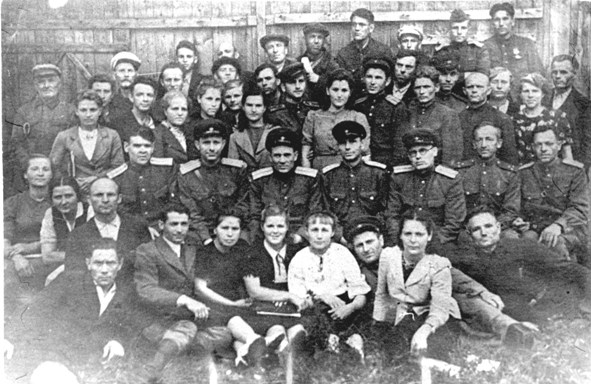
The first post-war meeting of workers of the Hydrometeorological Service of Belarus, August 1945
The Hydrometeorological Service of the country was transferred into a civilian position, the AHS of the MMD was reorganized in the AHS of the BSSR in 1946.
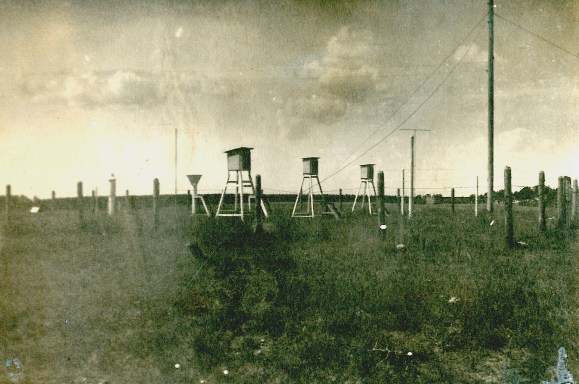
The Meteorological area at the Observatory, June 24, 1947
Since 1948 the Belarusian Hydrometeorological Service became the World Meteorological Organization (WMO) member whose representatives regularly participate in the work of WMO congresses, as well as in sessions of regional associations. The Hydrometeorological Service of Belarus was repeatedly noted as an advanced one in the Union socialist competition. The first shifting Red flag of the Moscow State University of Civil Aviation and the Central Committee of the Union of Aircraft Workers was awarded to the collective for the achieved production successes in 1951.
The period of the 60s of the last century is characterized by the introduction of instrumental observations of visibility (M-53, M-71, M-37, RDV-1), wind parameters, and recording of the lower cloud boundary. The process of production, collection, processing and dissemination of hydrometeorological information on the territory of the Republic of Belarus has been automated.
The Hydrometeorological Service of the Republic of Belarus was a kind of testing ground in the development of new technical means - meteorological instruments and equipment (including automatic meteorological stations) in the times of the USSR.
The first automatic meteorological stations were stations M-106 with a set of sensors. From March 1971 to December 1973, 25 meteorological stations were transferred to the operating mode in the volume of automatic stations, i.e. only instrumental observations were lead of the temperature and humidity of the air, atmospheric pressure, wind characteristics, soil temperature in depth, sunshine, precipitation, visibility and the height of the lower boundary of the clouds.
Complex automation has affected not only meteorology and ground observations. Automatic hydrological stations were tested during this period, machine processing of agrometeorological information was introduced, a system for automated processing of aerological information was created, equipment for automatic processing of meteorological radar data was tested, and automatic processing of actinometric observations was introduced.
In 1974, the Belarusian Hydrometeorological Service included the Belarusian territorial hydrometeorological center, three observatories, 34 meteorological stations, six specialized (swamp, lake, forest and 3 agrometeorological), 7 hydrological, 16 aerometeorological stations, 201 hydrological stations, and about 700 collective farm and state farm agrometeorological fasts.
1979. The Administration of the Hydrometeorological Service of the BSSR was transformed into the Belarusian Republican Administration for Hydrometeorology and Environmental Control.
1988. The Belarusian Republican Administration for Hydrometeorology and Environmental Control was renamed “The Belarusian Republican Administration for Hydrometeorology”.
1991. It was transformed into the Main Administration for Hydrometeorology under the Council of Ministers of the Republic of Belarus.
After the proclamation of the sovereignty of Belarus in 1991, the Law of the Republic of Belarus “About Hydrometeorological Activity” was developed and established on May 10, 1999, establishing the legal basis for the implementation of the hydrometeorological activities of the national hydrometeorological service. At present, organizations and subdivisions of the national hydrometeorological service are guided in their activities by the law of the Republic of Belarus of 09.01. 2006 No. 93-З “About Hydrometeorological Activities”.
1995. It was reorganized into the Committee for Hydrometeorology of the Ministry for Emergency Situations and Population Protection from the Consequences of the Chernobyl Disaster of the Republic of Belarus.
1997. It was transformed into the State Committee for Hydrometeorology of the Republic of Belarus.
XXI Century.
In 2001, the State Committee on Hydrometeorology of the Republic of Belarus was liquidated by the Decree of the President of the Republic of Belarus. State regulation in the field of hydrometeorology is entrusted to the Ministry of Natural Resources and Environmental Protection of the Republic of Belarus, in whose structure the Department for Hydrometeorology was established. It included the Republican Hydrometeorological Center, the Republican Aeronautical and Meteorological Center, the Republican Center for Radiation Monitoring and Environmental Monitoring, six regional hydrometeorological centers, 54 weather stations, 86 meteorological posts, 3 hydrological stations, 136 hydrological stations, 6 hydrometeorological stations, a background monitoring station, lake station, swamp station, 2 inter-district centers for hydrometeorology and environmental monitoring, 8 aeronautical meteorological civil stations.
2015 year. The state institution “Republican Hydrometeorological Center” and the state institution “Republican сenter for radiation monitoring and environmental monitoring” have been merged into the State Institution “Republican center for hydrometeorology, control of radioactive contamination and environmental monitoring” (Hydromet).
Hydromet's activities are aimed at ensuring:
• Hydrometeorological security of the country;
• Needs of government agencies, economic sectors and the public in hydrometeorological data and information about the environment;
• Participation in international cooperation in the field of hydrometeorological activities.
Since 2016, the Hydrometeorological Service has been participating in the Integrated Environmental Monitoring Program in the Belarusian Nuclear Power Plant location area.
2017 year. State institution “Republican center for hydrometeorology, control of radioactive contamination and environmental monitoring” (Belhydromet).
The state institution “Republican center for hydrometeorology, control of radioactive contamination and environmental monitoring” was reorganized by joining regional centers for hydrometeorology and environmental monitoring to it.
Currently, the main hydrometeorological service of Belarus is the state network of hydrometeorological observations, which includes 165 hydrometeorological objects:
• 6 - regional centers for hydrometeorology and environmental monitoring (Belhydromet branches);
• 4 - Interregional Center for Hydrometeorology and Environmental Monitoring;
• 31 - meteorological station;
• 7 - civil aeronautical meteorological stations;
• 6 - agrometeorological stations;
• 2 - hydrological stations;
• the swamp station;
• background monitoring station;
• 107 hydrological posts.
Radiosounding of the atmosphere is performed by air stations in Brest and Gomel.
The main goals of the activities of the Hydrometeorological Service of Belarus were and still are:
- environmental regular monitoring, information gathering, analysis and generalization;
- hydrometeorological forecasts compilation, provision of information on actual and expected weather conditions, warnings of dangerous hydrometeorological phenomena;
- ensuring prompt response in the event of accidents or incidents related to environmental pollution;
- maintenance of the climatic cadaster, water cadaster;
- study of climatic, agrometeorological, hydrological conditions in the territory of the Republic of Belarus, analysis of regional climate changes;
- ensuring, in accordance with the established procedure, government agencies, other organizations, economic sectors and the public with all types of hydrometeorological and radiation-ecological information;
- participation in interstate exchange of information on the state of the environment in accordance with the recommendations of WMO and UNESCO.
Within the framework of international cooperation, the specialists of the Hydrometeorological Service of Belarus take part in various international projects (for example, Baltic Earth, BALTRAD).
The materials of G. Pavlotsky, R. Ovchinnikova








 Official heraldic symbols of the Republic of belarus
Official heraldic symbols of the Republic of belarus
 Internet portal of the President of the Republic of Belarus
Internet portal of the President of the Republic of Belarus
 National legal Internet portal of the Republic of Belarus
National legal Internet portal of the Republic of Belarus
 Ministry of natural resources and environmental protection of the Republic of Belarus
Ministry of natural resources and environmental protection of the Republic of Belarus